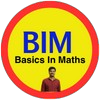Chapter 1 Real Numbers Answers | NCERT Solutions
Chapter 1 Real numbers are a fundamental concept in mathematics that includes all rational and irrational numbers. Here’s a brief overview:
Chapter 1 Real Numbers
Definition:
Real numbers encompass all numbers that can be located on the number line. They include rational numbers, which can be expressed as a fraction of integers, and irrational numbers, which cannot be expressed as fractions and have non-repeating, non-terminating decimal representations.
Representation:
Real numbers can be represented in various forms, including decimal notation, fraction notation, or as roots of algebraic equations.
Properties:
Closure under addition and multiplication: The sum or product of any two real numbers is also a real number.
Commutativity and associativity: The addition and multiplication of real numbers are commutative and associative.
Distributive property: For any real numbers a, b, and c, a(b + c) = ab + ac.
Order property: Real numbers can be compared using the less than (<) or greater than (>) symbols, and they obey the trichotomy law, which states that for any two real numbers a and b, exactly one of the following holds: a < b, a = b, or a > b.
Density property: Between any two distinct real numbers, there exists another real number. This property illustrates the continuous nature of the real number line.
Operations: Arithmetic operations such as addition, subtraction, multiplication, and division are defined for real numbers, and they follow the usual rules of arithmetic.
Solutions: Real numbers are often the solutions to various mathematical equations and inequalities. For example, in algebraic equations, real numbers are the values of the variable that make the equation true.
Understanding real numbers and their properties is crucial in various fields of mathematics, including algebra, calculus, and analysis, as well as in many scientific and engineering applications.
 Loading...
Loading...NCERT Solutions for Class 10 Mathematics Chapter 1 Real Numbers:
Exercise 1.1:
In this exercise, students will learn about Euclid’s division lemma, the Fundamental Theorem of Arithmetic, and the concept of the highest common factor (HCF).
They’ll solve problems related to the division algorithm and the uniqueness of quotients and remainders.
Exercise 1.2:
Students will understand the concept of irrational numbers and the decimal representation of rational and irrational numbers.
Problems involve proving that given numbers are irrational, expressing irrational numbers in decimal form, and finding rational approximations of irrational numbers.
Exercise 1.3:
This exercise focuses on operations on real numbers, such as addition, subtraction, multiplication, and division.
Students will learn about the properties of rational numbers under these operations.
Exercise 1.4:
Here, students will explore rationalizing factors, rationalizing the denominator, and simplifying expressions involving surds.
Exercise 1.5:
The concept of laws of exponents for real numbers is discussed here.
Students will learn about the laws of exponents and how they are applied to real numbers.
Miscellaneous Exercises:
These exercises cover a mix of topics from the chapter, including finding the HCF and LCM of given numbers, verifying the irrationality of numbers, simplifying surds, and applying the laws of exponents.
Each exercise includes a variety of problems to ensure that students grasp the fundamental concepts of real numbers thoroughly. The solutions provide step-by-step explanations to aid in understanding and learning.






